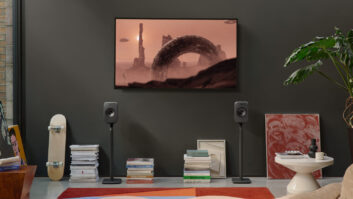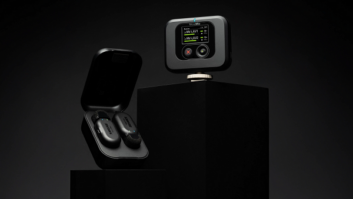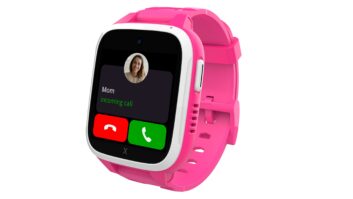NEW YORK – The first home-automation products incorporating the wireless DECT-ULE (ultra low energy) standard have begun to arrive in the U.S., promising to stir competition with the Z-Wave and ZigBee wireless standards and other proprietary wireless standards.
The new technology, already available In Europe and other countries, uses the 1880- 1900MHz DECT cordlessphone band for immunity to interference from Wi-Fi and Bluetooth devices. The standard, which requires a home hub, appears in security cameras, door and window sensors, motion sensors, smoke/heat/ CO2 detectors, thermostats, smart plugs, and in DECT cordless phones.
ULE-enabled cordless phones can be used to control basic system functions such as arming/disarming, display low-frame-rate security- camera video on their displays, display notifications of open windows and the like. Smartphone and tablet apps deliver fuller control.
Like other do-it-yourself home-automation systems, consumers program scenes and event schedules.
Other key features of the technology include:
• very low-cost chips because hundreds of millions of DECT chipsets have already been produced, said the ULE Alliance.
• lower power consumption than ZigBee and ZWave, allowing battery-operated devices to work for 5-10 years.
• AES-128 encryption for security.
• button-press pairing said to be as easy or easier than Bluetooth pairing, with products remaining paired after they’ve been disconnected and reconnected.
• 1,000-foot line-of-sight range so that repeaters aren’t necessary to cover a large home, driving down system costs and improving reliability, the ULE Alliance (ULEAlliance.org) said. Because the hub-and-spoke system does not require repeaters, sensors and other devices remain operational even if one device fails. “The only thing that can take down the whole system is failure at the base station (hub). In that rare event, diagnosis of the problem is more straightforward than with a mesh network,” a spokesperson explained.
• operation in the DECT-dedicated band, which doesn’t share bandwidth with 2.4GHz Wi-Fi and Bluetooth devices as ZigBee devices do. Z-Wave shares bandwidth with a handful of devices in the 900MHz band in the U.S., the Z-Wave Alliance said.
• a 1Mbps transmission band that handles control signals, voice, and low-frame-rate low-resolution video. The architecture enables cordless handsets to display DECT-delivered security-camera video and enables security cameras to handle two-way conversations. Z-Wave and ZigBee, in contrast, feature 40Kbps and 250Kbps bandwidths, respectively.
Wi-Fi, however, can be used in DECT ULE systems to stream high-frame-rate video, enable control from Wi-Fi-equipped smartphones and tablets, and communicate with Wi-Fi routers to enable remote monitoring and control.
Using Wi-Fi for video represents a battery-performance tradeoff, however. “Using the lower resolution full-ULE approach gives a usable image for monitoring an area or identifying who is at the door,” an association spokesperson said. “Voice capability is a bonus that’s very useful at the front door.” Although voice can be built into Wi-Fi cameras, he said, it comes “at the expense of some added electronics and assembly costs.”
Not surprisingly, two companies with strong U.S. presences in DECT cordless phones – Panasonic and VTech – are among the first to bring ULE products to the U.S., ranging from security cameras to sensors and smart plugs. Their hubs also incorporate Wi-Fi. (See story below.)
Other companies with DECT ULE consumer products outside the U.S. include Israel-based OEM/ODM supplier Crow Communications and Gigaset, formerly the Siemens phone group. Gigaset currently lacks a U.S. presence, but Crow Group sells home automation and security/ monitoring products through the professional security installer market. Crow is adding ULE connectivity to existing products that use other wireless or wired technologies in sensors. The company is in the process of launching into its current sales channels, an alliance spokesperson said.
For its part, the European-based ULE Alliance recently launched a testing program to ensure device interoperability among brands, and products with the ULE logo will appear by mid-year. Panasonic, however, has already begun to offer ULE products through its web store, though they are not yet certified. The products will also be available at retail in February.
At the start of the year, the ULE Alliance had 66 member companies. Six are promoter members, eight are contributor members, and the remaining 52 were classified as adopters, who have access to specs and technical documentation.
Ten of the members are “consumer facing” brands, including Panasonic; Gigaset; VTech; Arendi, a Swiss maker of cordless phones; NetGear, the maker of routers/ gateways and cordless phones; Ooma, the U.S. provider of VoIP service and cordless phones; and Swiss- Voice/Invoxia, also a Swiss maker of cordless phones.













